Our Meatless Future: How The $90B Global Meat Market Gets Disrupted
- November 9, 2017
Will a meatless food industry featuring lab-grown meat, seafood substitutes, and insect protein be the future of food? Food giants from Tyson to Cargill are working to navigate a future where protein isn’t dominated by traditional animal sources.
By some estimates, 30% of the calories consumed globally by humans come from meat products, including beef, chicken, and pork.
That translates to staggering numbers of animals grown for food: there are over 30 million head of beef cows in the US, and 21 million pigs in Iowa alone.
The meat industry has evolved into a complex global business that involves farms and feed lots, as well as meat middle-men, like processing and storage centers, transportation and logistics, slaughterhouses, and more.
Together, the 7 largest meat companies combine for over $71B in market capitalization, with the largest, Tyson, boasting a $26B valuation.
The industry has seen massive consolidation, as companies like Hormel and Brazil-based JBS have grown bigger and bigger through the acquisition of new meat brands and products.
Another prominent deal was the 2013 acquisition of US-based Smithfield Foods, which owns brands such as Armour and Farmland. Smithfield was purchased by WH Group, the largest pork producer in both China and the US. At the time of the deal, Smithfield was valued at $7.1B.
Despite high-profile deals in the sector, the industrial meat industry faces a rising tide of challenges, in the form of interrelated business, ethical, and environmental concerns.
Meanwhile, startups using technology to engineer meat in labs or manufacture it from plant-based products are rising in popularity. Meatless food products from beef-free burgers to pea-based shrimp threaten the future of the meat giants.
In addition to offering new products, these startups have the potential to upend all parts of the meat production process.
Going forward, the meat value chain could be simplified dramatically, as the “clean meat” lab or factory could take the place of farms, feed lots, and slaughterhouses.
Especially vulnerable to these changes are food companies such as Tyson, Pilgrim’s, and Sanderson Farms, which rely on meat products for 80% or more of their revenue, as seen below.
Using CB Insights data, we dug into some of the major trends in the growing meatless industry, from startups to watch, to key investors, to future trends and challenges.
TABLE OF CONTENTS
- Startups innovating across the meatless ecosystem
- Meal replacement & dairy substitutes
- Insect protein
- Trends in meat-free “meat”
- Open-source clean meat
- Seafood substitutes
- Corporates and accelerators back the meatless future
- New protein sources
- IndieBio & New Crop Capital
- Why the shift towards meatless?
- Startups innovating across the meatless ecosystem
Startups innovating across the meatless ecosystem
Startups are disrupting the meat production value chain through the development of high-tech protein products, threatening established players like Tyson.
The graphic below provides a snapshot of companies that are producing meatless products that attack many of the markets targeted by Tyson’s existing meat product lines. Meat substitute startups are not only competing with prepared and frozen meats, but are also creating alternative snacks (such as Beyond the Shoreline’s kelp jerky).
Tyson itself, as we’ll see below, is an aggressive participant in the alternative protein movement.
While the environmental benefits to lab-grown meat are potentially huge, as of now meatless products are still significantly more expensive on a per-pound basis than the alternatives.
MEAL REPLACEMENT & DAIRY SUBSTITUTES CAN ALSO DISPLACE TRADITIONAL MEAT
It’s not just meat substitutes disrupting the traditional food chain: meal replacement alternatives are also gaining momentum in the food space.
Among these startups, Soylent leads the pack with over $71M in disclosed funding from investors like Andreessen Horowitz, Lerer Hippeau Ventures, Google Ventures, and others. (Soylent has also already entered mainstream culture as the favored meal replacement drink of tech programmers in Silicon Valley.)
The drink has run into some problems, including a recent ban in Canada, where regulators said it does not meet all the specific requirements for meal-replacement products.
But Soylent has expanded distribution steadily and is now available in some local stores, including at 7-11s in Los Angeles.
Dairy alternatives are also seeing greater investor and consumer attention, as consumers are increasingly leaning towards plant-based diets and protein alternatives.
Companies like pea-protein milk producer Ripple Foods, non-dairy cheese provider Kite Hill, and AI-powered eggless mayo producer NotCo already are selling their products in grocery stores for everyday consumption.
Another company, Perfect Day, is applying gene sequencing and 3D printing to create milk without the cow. The company has raised over $2M in disclosed equity funding from Temasek Holdings and other investors.
By providing new food sources, meal and dairy substitutes could further chip away at traditional meat market share.
INSECT PROTEIN GOES MAINSTREAM
While the taboo against eating bugs is strong in most cultures, the creatures are nonetheless trending as an environmentally-friendly protein source. To make insect consumption more palatable, the new trend focuses on using insects to create alternative ingredients.
Manufacturers are making flour from crickets, mealworms, and other insects, which can be raised at scale.
Many companies are using cricket flour or insects and worms for snacks, protein bars, and even insect-enriched pasta. Exo, for example, produces cricket-based protein bars.
Cricket-raising results in 100x lower greenhouse gas emissions than beef cow production, and crickets also have higher proportions of protein than beef or chicken. And because crickets require proportionally less feed than livestock animals, production is more efficient.
Insect-based protein brands could eventually displace meat-based snacks by offering healthier and more sustainable options.
TRENDS IN MEAT-FREE “MEAT”
Plant-based burgers that ‘bleed’ and taste like the real thing
Plant-based burgers have recently become a lot more popular.
Startups producing these burgers are targeting both plant-based and meat-based diets by 1) increasing options for vegetarians and vegans and 2) enticing meat eaters to consume environmentally-friendly meat without compromising on taste.
“We think of it as meat made a better way … Meat today basically is made using pre-historic technology, using animals to turn plants into this very special category of food … But to your typical consumer … the value proposition of meat has nothing to do with its coming from an animal.”– Pat Brown, CEO of Impossible Foods
Impossible Foods, a major player in the space, leverages molecular engineering to create “bleeding” plant-based burgers that the company claims is nearly indistinguishable from meat.
The company’s discovery of heme, an iron-rich molecule in animal proteins, has enabled it to replicate the “meaty” flavor in their plant-based products.
Impossible Foods closed a $75M late-stage round in August, to aid in ramping up production and distribution channels. Earlier this month, the company announced that it’s expanding distribution channels to university cafeterias, museum cafes, and other retail outlets. Impossible Foods’ burger is already available at some Bareburger chains.
In the future, Impossible Foods could apply its technology to new animal-free substitutes, such as pork, seafood, and lamb — even further disrupting traditional meat corporates’ frozen or prepared food products.
Beyond Meat is another major company making plant-based burgers and other imitation meat products such as chicken strips and beef crumbles.
The company also has been experimenting with a plant-based pork product.

Plant-based meat companies have been seeing larger and larger rounds from venture capital and other types of investors.
With $258M in disclosed financing, Impossible Foods has the most funding out of any startup in the meat substitutes space, while Beyond Meat has the most investors, from Tyson New Ventures and Kleiner Perkins Caufield & Byers to, most recently, actor Leonardo DiCaprio.
Investors back lab-grown meat
Lab-grown or “cultured meat” could be a bridge between real meat and plant-based products.
San Francisco-based Memphis Meats produces meat from self-reproducing cells, thereby producing meat that is an “animal-based” product but avoiding the need to breed, raise, and slaughter huge numbers of animals.
The company debuted its first synthetic meatball in 2016 and followed up with the world’s first cell-cultured chicken and duck earlier this year.
Memphis Meats aims to decrease the cost of lab-grown meat in order to compete with commercial meat.
While its original meat cost $18,000 a pound, by May the company announced it had gotten costs down to $3,800 per pound. The company also claims that it can produce animal-free products using just 1% of the land and 1% of the water compared to meat-producer incumbents.
In August, Memphis Meats raised a large $17M Series A led by Draper Fisher Jurvetson, who invested alongside other notable investors including Bill Gates and Richard Branson.
In the future, companies like Memphis Meats could cut production, slaughter, and processing out of the meat production value chain.
Memphis Meats wasn’t the first company to explore lab-grown meat products: Dr. Mark Post, a Netherlands-based researcher, produced the world’s first lab-grown burger in 2013, in research originally financed by Google’s co-founder Sergey Brin. This initiative spun off into MosaMeat, which aims to bring in vitro meat to market in the future.

Both plant-based meat products and lab-grown “clean” meat have seen notable investors, including some top VCs (Khosla Ventures, Kleiner Perkins Caufield & Byers), meat corporates (Tyson Foods, Cargill), and others.
Companies in adjacent spaces also have a stake in the meatless revolution. Vegan mayo producer Just (formerly Hampton Creek) recently announced expansion into clean meat products.
Just released the below video in August, illustrating its vision for the future of clean meat. Transparency, food security, and environmental efficiency are all in focus for the company’s clean meat products.
In September, the company announced new patents — including one for machine learning-based analysis of plants for potential products — that will help it manufacture this clean meat at scale.
Just anticipates its clean meat product could reach groceries by 2018.
Methane-based protein sees early funding
“We’d sell it [protein] to someone else who makes it into a steak-like product, or a fish-like product, or something like a tofu perhaps, that we could grill and eat…”– Ezhil Subbian, Founder & CEO at String Bio
Biotech companies are even exploring methods for engineering meat-like products from methane. While companies are already creating methane-based animal feed, startups are now expressing interest in engineering methane-based protein fit for human consumption.
California-based Calysta recently raised $40M in Series D funding, while India-based String Bio has received $100K from Future Food Asia to commercialize its technology.
While protein products developed by these companies are not currently fit for human consumption, methane-based proteins could improve the environmental impact of meat production, and eventually further fuel the meatless revolution by creating another food source for developing economies in Africa and Asia.
Per Ezhil Subbian’s comment, the first step is creating a methane-based protein that can be marketed to humans and subsequently integrated into their diets.
OPEN SOURCE CLEAN MEAT COULD POPULARIZE ANIMAL-FREE PRODUCTS
Some companies in the meatless space are competing to be first-to-market with animal-free products. Taking a different approach, Yuki Hanyu, founder of Tokyo-based Integriculture and nonprofit Shojinmeat Project, is working to acclimate future generations to a meatless future through open source tech.
Hanyu is providing Japanese high school students access to high-tech heated boxes that allow them to culture animal cells at home and grow them into meat-like products.
The concept may seem far-flung, but the Shojinmeat Project is looking to establish a crowd-sourced, bottoms-up approach to meat development that allows people to play with and ultimately integrate lab-grown meat into their diets.
FISH-FREE HITS SEAFOOD SUBSTITUTES
“Shrimp has one of the worst supply chains in the seafood industry,” – Dominique Barnes, New Wave Foods Co-Founder & CEO
In addition to land-based meat, companies are applying similar processes to create sustainable seafood alternatives.
Companies in this space are seeing greater media attention and funding. For example, Finless Foods uses cellular agriculture to develop faux fish meat, while New Wave Foods produces pea protein and algae-based imitation shrimp.
French startup ODONOTELLA, which produces algae-based salmon, raised an angel round in October 2017.
While still in early stages of R&D, fish-free products are further expanding the possibilities of an animal-free future. As with animal-free meat, fishless foods could radically simplify and clean up the seafood production value chain.
Corporates and accelerators back the meatless future
CORPORATES BET ON NEW PROTEIN SOURCES
Large corporations involved in the meat industry are themselves also investing in meat innovation as a form of outsourced R&D.
Food-trading giant Cargill participated in Memphis Meats’ Series A round, while Nestle, which owns a number of frozen food brands that incorporate meat, acquired vegan prepared foods producer Sweet Earth in September.
“Plant-based protein is growing almost, at this point, a little faster than animal-based, so I think the migration may continue in that direction.”Tom Hayes CEO, Tyson Foods
Additionally, the rise of funds with a strong emphasis on alternative meat production and innovation, such as Tyson New Ventures, indicates that meat producers foresee the possibility of a meatless future.
Tyson New Ventures made its first investment in Beyond Meat in October 2016. With the launch of this “Internet of Food” fund, we see Tyson looking to pivot from a meat producer to a more broadly protein-friendly brand.
INDIEBIO AND NEW CROP CAPITAL BETS POINT TO A MEATLESS-MINDED FUTURE
Beyond corporates, venture capital firms and accelerators are also funding research and development into these high-tech foods. Biotech accelerator IndieBio has placed many bets in animal-free foods, with notable investments in Memphis Meats, New Wave Foods, and Finless Foods, as well as startups focusing on dairy and gelatin substitutes.
Early-stage venture capital fund New Crop Capital funds startups that develop cultured and plant-based meat, dairy, and egg products, along with service companies that facilitate the promotion and sale of these products.
New Crop Capital’s investments include a $1.2M seed round to Sunfed Meats, which produces “chicken-free chicken” made of pea protein, as well as a seed investment in Ocean Hugger Foods, which has developed ahimi, a tomato-based substitute for raw tuna. Ocean Hugger Foods is also working on eggplant-based eel and carrot-based salmon substitutes.
Why the shift towards meatless?
There are several macro reasons for the shift toward a more meatless future.
Urbanization, population growth, and a rising middle class lead to greater meat consumption. In 2016, approximately 55% of the world’s population lived in urban settlements, and this percentage is expected to increase to 60% by 2030, according to the UN.
Meanwhile, the world’s population is expected to surge to 9.6B by 2050, leading to a 61% increase in food production. Emerging markets are driving this growth: China, in particular, is the world’s largest consumer of meat, with protein consumption expected to grow 3 – 4% a year thanks to a rising middle class.
This increasing demand begs the question of how society will sustainably feed future generations, and meatless companies are looking to fill the gap.
Alternative protein sources can reduce negative environmental impact. As mentioned above, livestock is a major contributor to greenhouse gas emissions. Additionally, reducing livestock could free up global cropland, decrease soil erosion, and relieve pressure on the world’s water supply.
Consumers are seeking healthier food alternatives. Rising obesity rates across the globe coupled with consumer interest in healthier food alternatives are also driving demand for meatless proteins.
Nonprofit initiative Meatless Monday and US-based food delivery platform GrubHubrecently partnered to demonstrate the growing popularity of meat alternatives. According to the analysis, demand for meatless dishes is increasing every day of the week, not just Mondays.
Advances in ag tech and synthetic biology are enabling high-tech meatless products.Cellular agriculture and molecular engineering are fueling tech-enabled meat substitutes that are better emulating the flavor and texture of real meat.
Meatless consumption could alleviate ethical questions around meat consumption. The meat industry has long been subject to ethical concerns behind meat production practices. To help address such concerns, Cargill recently announced it is testing blockchain to show meat buyers where their individual bird came from.
A spike in the discussion of blockchain in conjunction with meat and food indicates a rising consumer desire for transparency around the food supply chain.
Alternative meats could reduce contamination. Growing lab-grown meat in a sterile environment can cut back on contamination and eliminate antibiotics from the meat production process. This could play a role in reducing global health problems caused by the current food production value chain.
The meatless revolution is global…
The greatest concentration of meat substitute deals has occurred in the United States, which is home to a well-developed food and beverage sector. At the same time, there is also a developed meatless market in Europe, as well as expected growth of the meatless sector in Asia.
Earlier in September, China announced a $300M deal to import lab-grown meat from three Israel-based companies — SuperMeat, Future Meat Technologies, and Meat the Future — as part of a broader plan to decrease the country’s meat consumption by 50%.
Such cross-country collaboration indicates that we can expect to see more experimentation across the globe on alternative protein sources.
Regulation is also starting to play a bigger role, as regulators explore cellular agriculture as a viable food source in the future.
In March, the National Academies of Sciences, Engineering, and Medicine in Washington, D.C. released a report on the future of biotechnology developments and regulation, while the White House launched a review of how U.S. agencies regulate agricultural biotechnology.
As of now, artificial meat regulation is still in early stages. Regulatory responsibility in an animal-free ecosystem could extend across multiple bodies, as biotechnology for food overlaps with many regulatory systems.
Or, a single regulatory agency could be created in the future to deal with the unique challenges of artificial meat regulation.
…but a truly meatless future has challenges to overcome
While plant-based products and other protein sources are taking off, lab-grown meat, in particular, faces a few obstacles.
Fake meat sounds icky. Many consumers face a psychological barrier towards eating lab-grown foods and may prefer the familiar taste of real meat products.
While groups like aforementioned Shojinmeat Project are acclimating future consumers to cultured meat, this socialization will need to happen on a global scale.
High-tech meat is expensive. Cost remains a largely prohibitive factor, with high-tech meat alternatives priced as luxury goods.
One of the main reasons that lab-grown meat is so expensive is due to the prevalence of fetal bovine serum, or FBS, in meatless products. FBS, which is extracted from cow fetuses, is a core and costly ingredient in lab-grown meat.
However, startups are looking to eliminate FBS from the meatless equation, in order to cut costs. Just has reported that it has developed a method to grow cell cultured chicken without FBS, while Memphis Meats is validating methods to produce its meats without the ingredient.
Can clean meat scale? Though many startups in the space claim that their products will revolutionize meat consumption, the question remains whether clean meat will provide a scalable method to feed the future — or whether it’s simply a new wave of molecular gastronomy.
Aforementioned cost considerations are crucial in scaling these products for mainstream consumption.
Will meatless products really be better for the environment? Despite claims that less meat consumption will reduce environmental impact, lab-based technologies come with their own high costs for electricity, heating, and other resources.
The automation of meat production could have far-reaching job implications for the agriculture industry. The meat sector is the largest employer within US agriculture, and mainstream meatless consumption could create chaos and eliminate jobs across the entire meat production value chain.
Meat producers, lobbyists, and other bodies have a great deal at risk when considering the effects of automation across the meat industry. (To learn more about the effect of automation on jobs, check out our State of Automation Report.)
Where is the meatless revolution headed?
The race is on.
Cost and scale are immediate considerations in moving these products from novelty purchases to kitchen staples. In the next few years, we can likely expect to see the cost of lab-grown meat decrease considerably.
From there, it’s just a matter of which companies will get their products to market first and best position their products as worth the price.
Continued advances in genetic engineering and plant-based innovation will enhance taste, flavor, and health benefits to incentivize consumption.
These technologies will also continue to expand across largely untouched meat and seafood categories (e.g. pork, duck, eel, etc.). We could see direct competitors to meat incumbent brands across virtually all frozen and prepared food categories.
Regardless of the hurdles to a meatless future, clean meat products are clearly diversifying and growing, capturing investor and public attention alike.

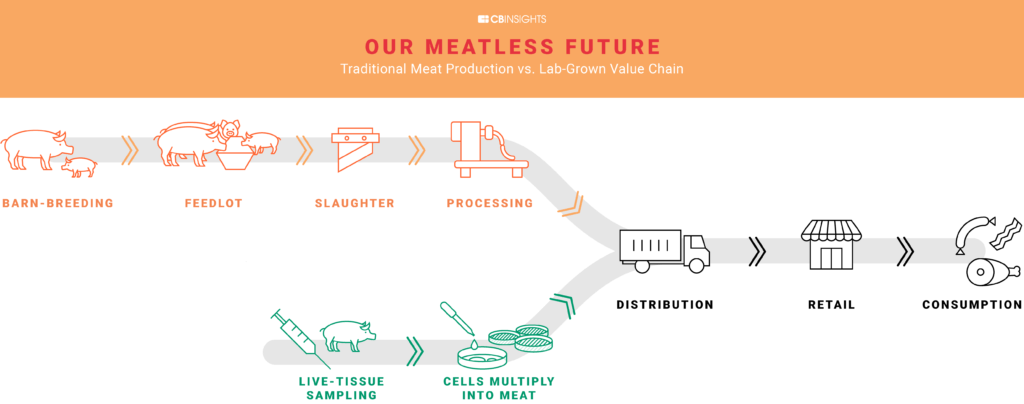

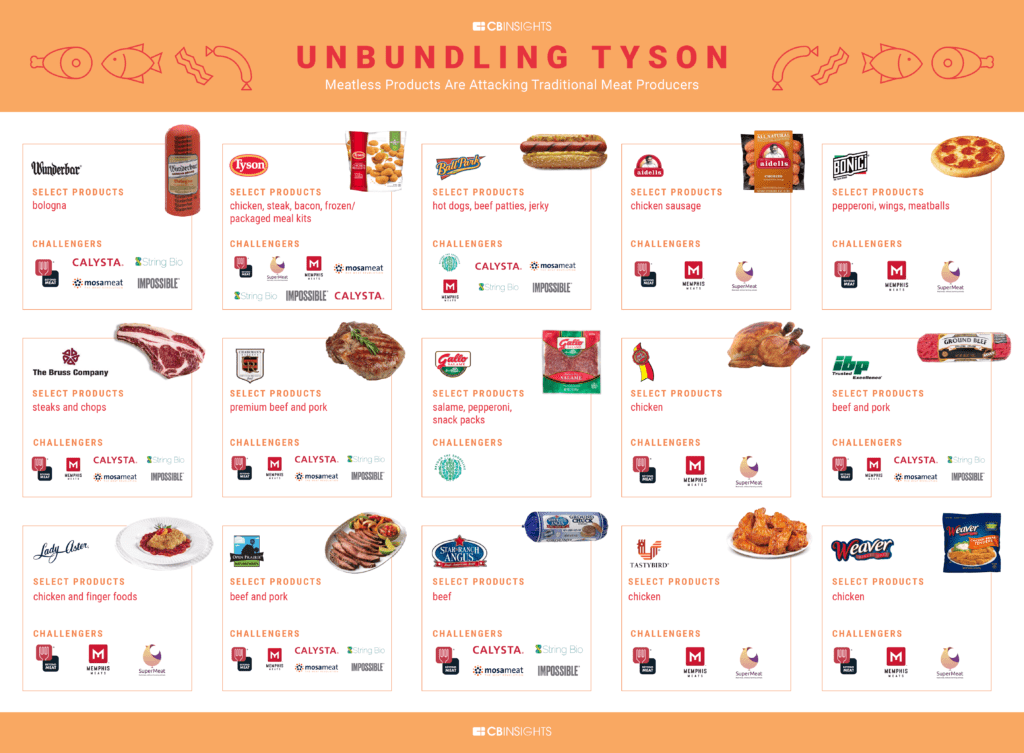
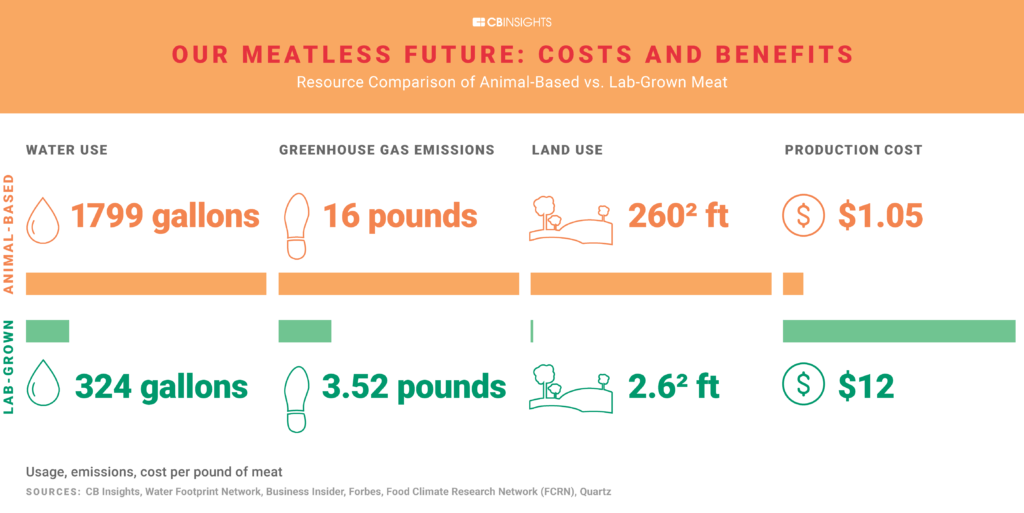

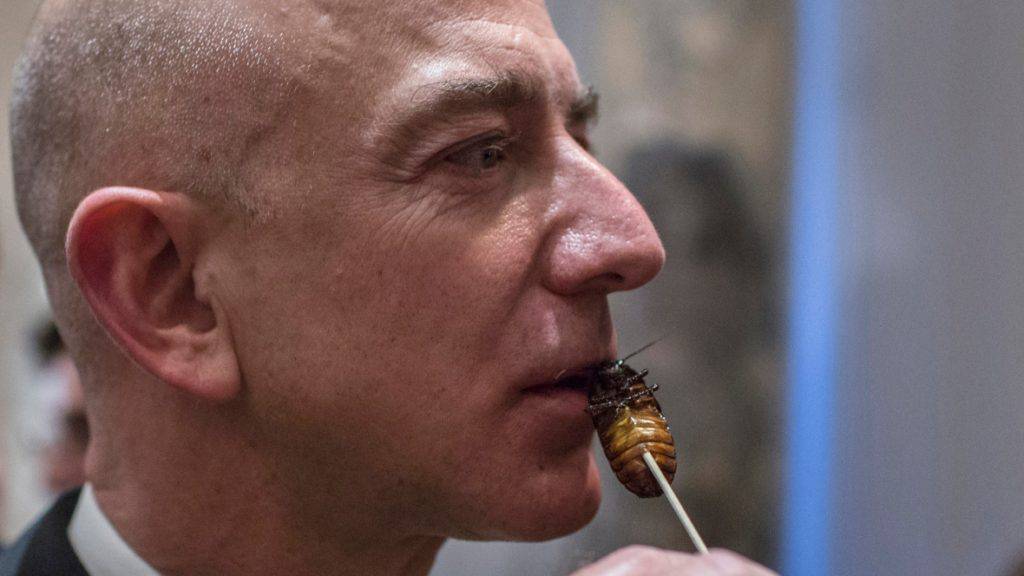




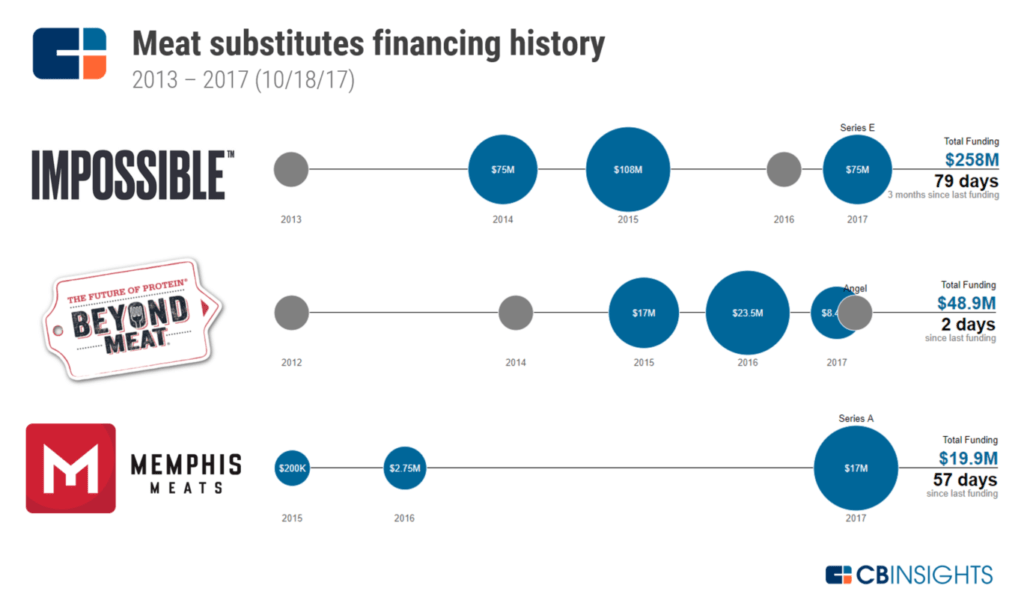
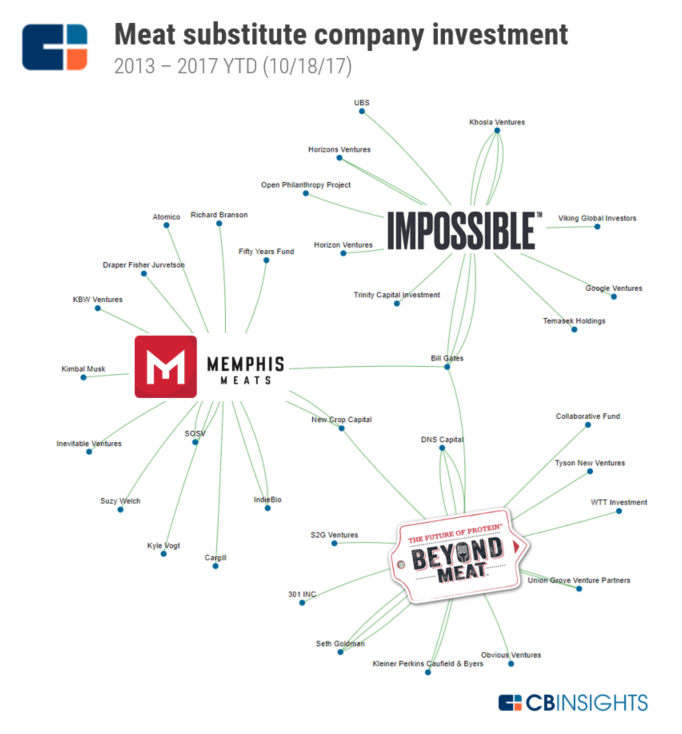

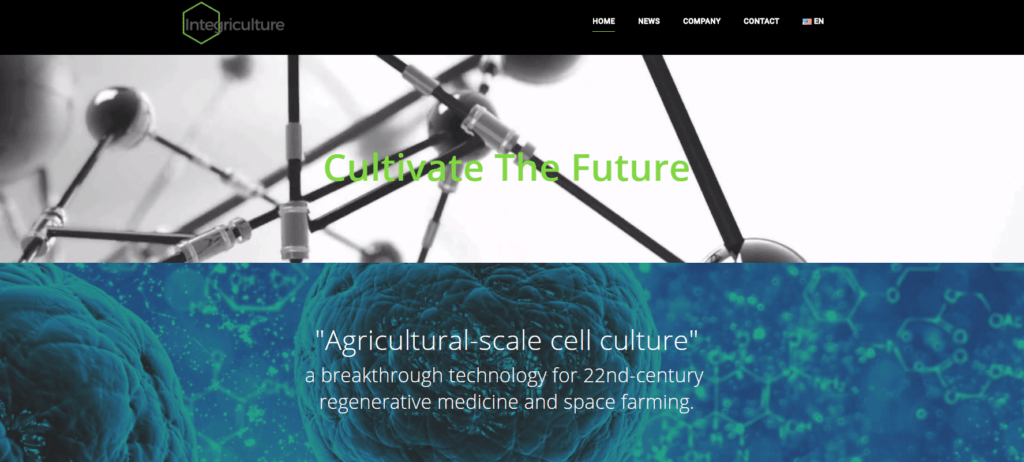
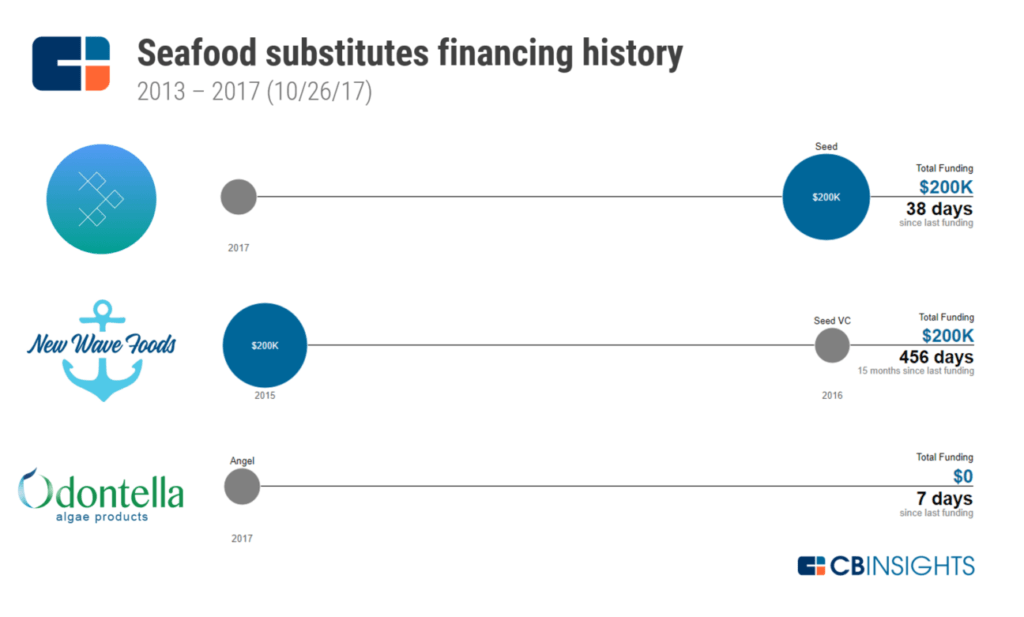




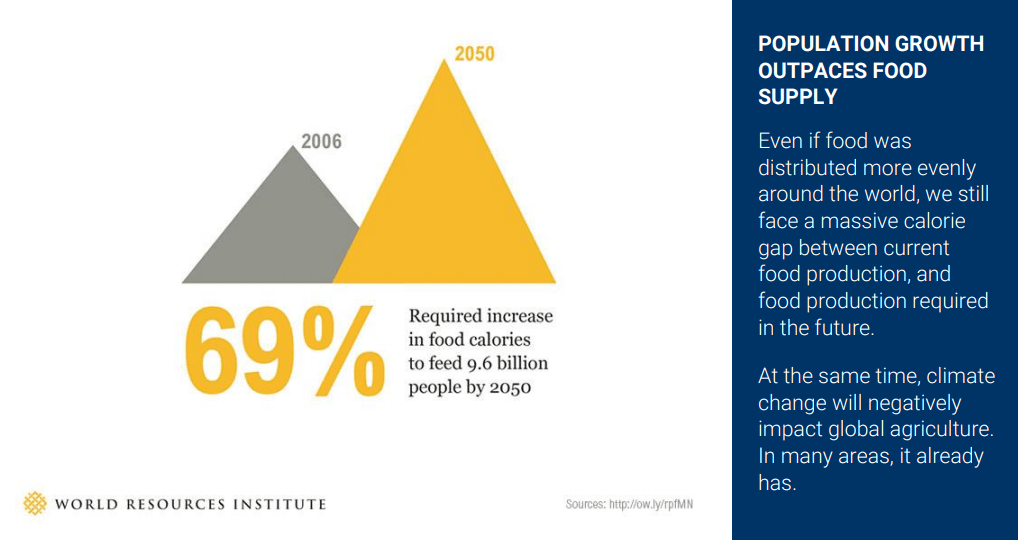

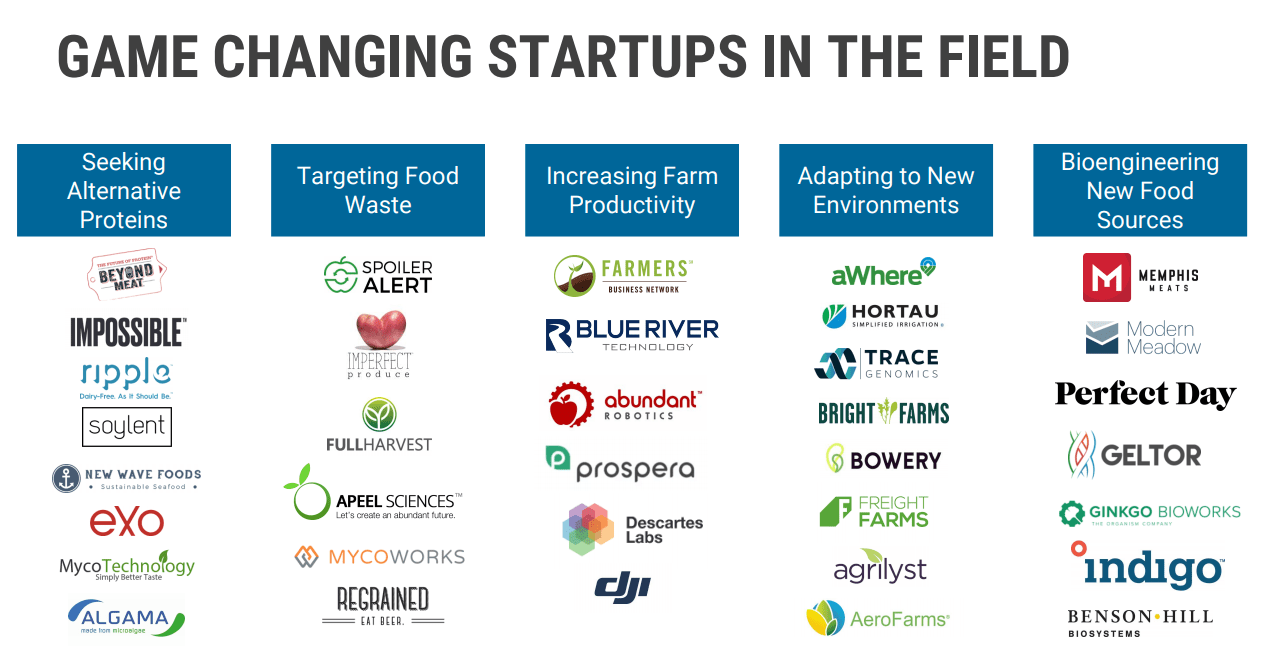
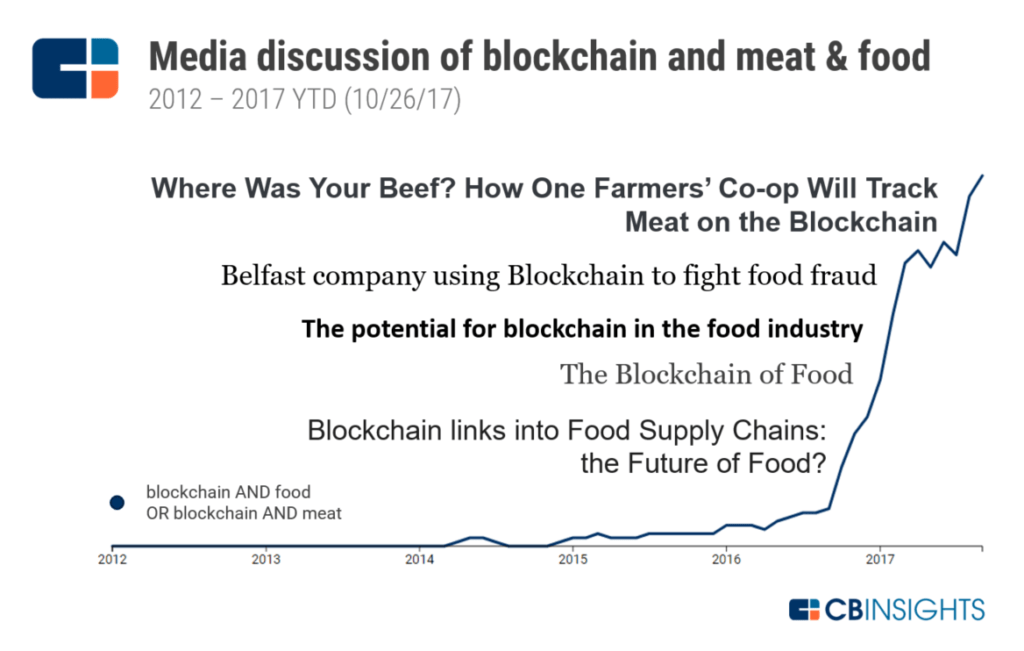

No comments:
Post a Comment